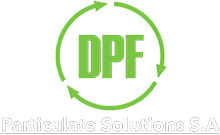DPF Cleaning
Diesel particulate filter (DPF) cleaning is an essential part of maintaining a diesel vehicle. The DPF is a device that is installed in the exhaust system of diesel engines to capture and filter out soot particles, which helps to reduce emissions and improve air quality. Over time, however, the DPF can become clogged with soot, which can lead to a range of problems for the vehicle and its owner.
To prevent these issues, it is important to clean the DPF on a regular basis. There are several methods that can be used to clean the DPF, including:
- Onboard regeneration: This method uses heat from the engine to burn off the accumulated soot in the DPF. The process is triggered automatically by the vehicle’s onboard computer, or it can be initiated manually by the driver. This method is convenient, as it does not require any special equipment, but it may not be effective at removing all of the soot from the DPF.
- Offboard regeneration: This method involves physically removing the DPF from the vehicle and cleaning it with specialized equipment. This can be done at our specialist DPF cleaning workshop using our patented def cleaning machine. Offboard regeneration is generally more effective at removing all of the soot from the DPF, but it is also more time-consuming and incurs a larger cost.
- Chemical cleaning: This method involves using chemicals to dissolve the soot in the DPF. The chemicals can be applied through the exhaust pipe or by soaking the DPF in a chemical bath. Chemical cleaning is generally less effective than the other methods, and it can also be harmful to the environment if not done properly.
Regardless of the method used, it is important to follow the manufacturer’s recommendations for DPF cleaning. This may involve cleaning the DPF every few thousand miles, or it may be based on the age or condition of the vehicle.
In addition to cleaning the DPF, there are several steps that can be taken to help prevent it from becoming clogged in the first place. These include:
- Using high-quality diesel fuel: Poor-quality diesel fuel can contain impurities that can clog the DPF.
- Driving the vehicle at high speeds or under heavy load: This can help initiate the regeneration process and burn off the accumulated soot.
- Regularly maintaining the engine: Ensuring that the engine is in good condition can help reduce the amount of soot produced.
- Avoiding short trips: Short trips can cause the DPF to become clogged more quickly, as the engine does not have time to reach its optimal operating temperature.
Overall, DPF cleaning is an important part of maintaining a diesel vehicle. By cleaning the DPF regularly and following the manufacturer’s recommendations, you can help ensure that your vehicle runs smoothly and efficiently, and you can also help reduce your environmental impact.
DPF Cleaning Process
Cleaning a Diesel Particulate Filter (DPF) is an essential maintenance task to ensure optimal performance and longevity of diesel engines. One effective method of cleaning a DPF is by utilising a diesel particulate cleaning machine, which employs a specialised process to remove accumulated soot and contaminants from the filter.
The process begins by removing the DPF from the vehicle. This requires locating the DPF unit, typically situated in the exhaust system, and disconnecting it carefully. Once removed, the DPF is secured in the cleaning machine for the subsequent steps.
The cleaning machine works by employing a combination of heat, air pressure, and specialised cleaning agents. The DPF is subjected to a controlled heating process that raises the temperature within the machine, effectively burning off the trapped soot particles. This step is crucial in restoring the filter’s efficiency.
Simultaneously, the cleaning machine utilises air pressure to blow compressed air through the DPF, dislodging and expelling the loosened particles. The air pressure helps to ensure a thorough cleaning of the filter, reaching even the most stubborn contaminants.
Additionally, the cleaning machine may incorporate cleaning agents specifically designed to dissolve and remove stubborn residues. These cleaning agents can further enhance the effectiveness of the cleaning process, ensuring a more thorough restoration of the DPF’s functionality.
Once the cleaning process is complete, the DPF is thoroughly inspected to ensure all contaminants have been removed. If necessary, the cleaning process may be repeated for particularly stubborn deposits.
Overall, utilising a diesel particulate cleaning machine offers a highly efficient and effective method for cleaning a DPF. It helps restore the filter’s performance and prolongs its lifespan, allowing diesel engines to operate at optimal efficiency while minimising emissions. Regular maintenance of DPFs through professional cleaning is a crucial aspect of diesel engine care.
